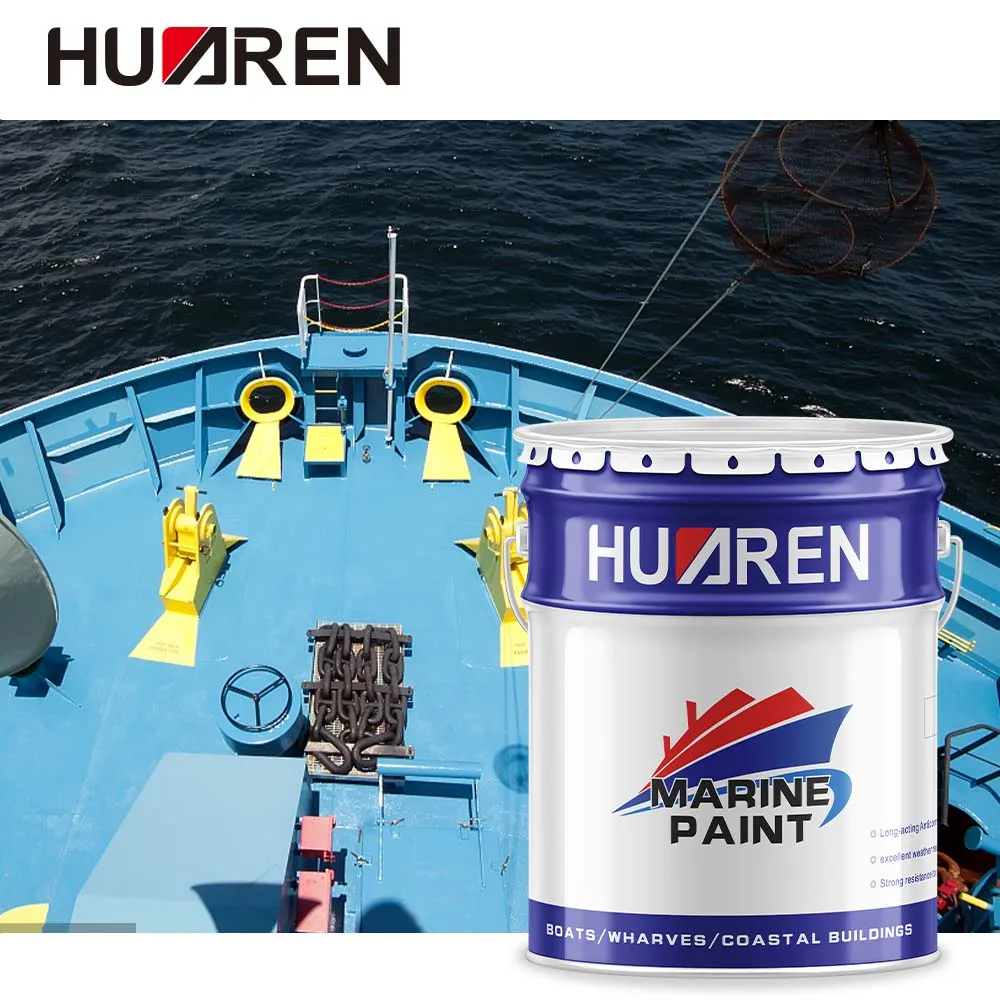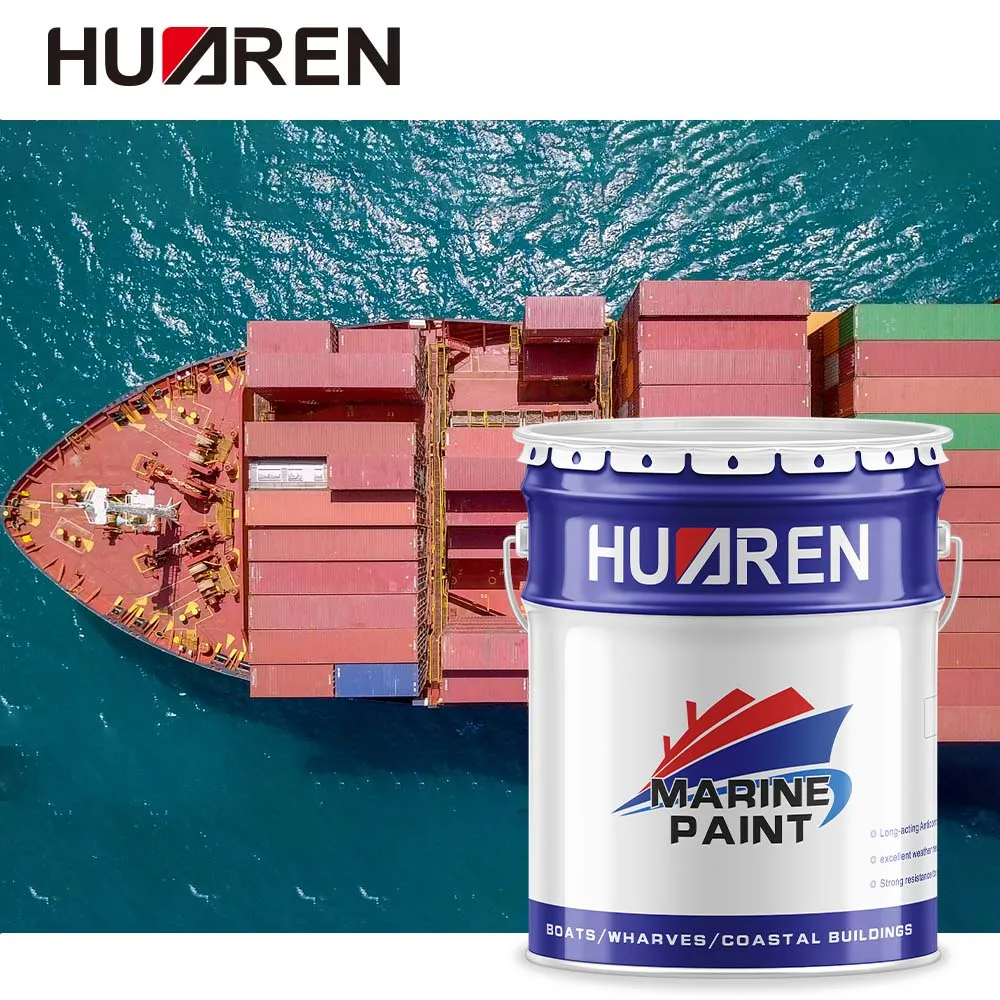In the fields of industry, construction, shipbuilding and automobile, metal structures and equipment are faced with harsh environmental erosion, such as moisture, salt spray, chemicals and high temperature. These factors can cause metal materials to corrode, age and even fail, thus affecting their service life and safety. In order to extend the service life of metal materials and ensure their normal operation, anticorrosion primers came into being. Anticorrosion primers not only play a key role in preventing corrosion, but also provide good adhesion and protection for subsequent coatings.
This article will explore in detail what anticorrosion primers are and their specific uses.

What is anticorrosion primer?
Anticorrosion primer is a coating used on metal surfaces. Its main function is to prevent metal oxidation and corrosion by forming a dense protective film to isolate air, moisture, salt and other corrosive substances from contact. Anticorrosion primers are usually composed of anticorrosion pigments, film-forming substances, solvents and additives. Common types of anticorrosion primers include epoxy primers, polyurethane primers, zinc powder primers and alkyd primers. Different primer formulas are suitable for different environments and applications.
The role of anticorrosion primer is not limited to anticorrosion, it also provides a stable and highly adhesive base for the topcoat, thereby improving the durability and protective performance of the entire coating system.
What are the components of anticorrosion primer?
Anticorrosion pigment
Anticorrosion pigment is an important component of anticorrosion primer, which mainly prevents the occurrence of corrosion by chemical or physical means. For example, zinc powder is one of the common anticorrosion pigments and has a cathodic protection effect. When the zinc powder in the primer comes into contact with the metal surface, the zinc will preferentially undergo oxidation reaction to protect the metal from corrosion. In addition, there are anticorrosion pigments such as red lead and zinc chromate, which prevent metal corrosion by forming a passivation film or corrosion inhibition.
Film-forming substance
Film-forming substance is the most important component in anticorrosion primer. Its function is to firmly bond the anticorrosion pigment and other components to the metal surface to form a continuous protective film. Common film-forming substances include epoxy resin, polyurethane resin, alkyd resin, etc. These film-forming substances each have excellent physical and chemical properties, such as wear resistance, water resistance, chemical resistance, etc., which provide reliable protective performance for anticorrosion primers.
Solvents and additives
Solvents are used to adjust the viscosity of anticorrosive primers for easy construction and coating. Additives are used to improve the construction performance, leveling, adhesion and weather resistance of primers. Common additives include dispersants, leveling agents, anti-settling agents and drying agents. Different formula combinations can meet different construction conditions and environmental requirements.

What are the classifications of anticorrosive primers?
Anticorrosive primers can be classified according to ingredients, functions and application occasions. Common classification methods are:
● According to ingredients: epoxy anticorrosive primers, polyurethane anticorrosive primers, zinc powder anticorrosive primers, alkyd anticorrosive primers, etc.
● According to functions: ordinary anticorrosive primers, heavy anticorrosive primers, marine anticorrosive primers, etc.
● According to application occasions: ship anticorrosive primers, steel structure anticorrosive primers, pipeline anticorrosive primers, etc.
What are the uses of anticorrosive primers?
The uses of anticorrosion primers are:
1. Prevent metal corrosion
2. Improve the adhesion of the coating system
3. Enhance the durability of the coating
4. Adapt to different environmental requirements
5. Protect the safety and service life of the structure
Anticorrosion primers are widely used in many industries and fields, and their uses are mainly reflected in the following aspects. The specific introduction is as follows:
Prevent metal corrosion
The core purpose of anticorrosion primers is to prevent corrosion reactions on the metal surface. When metals are exposed to the atmosphere, moisture or chemicals, they are prone to oxidation reactions, forming a rust layer, which leads to a decrease in the strength of the metal structure. Anticorrosion primers effectively prevent metal corrosion by forming a dense protective film to isolate the direct contact between the corrosive medium and the metal.
Improve the adhesion of the coating system
Anticorrosion primers can not only prevent corrosion, but also provide good adhesion for subsequent topcoats. Primers can fill in small unevenness on the metal surface, enhance the bonding strength between the topcoat and the substrate, and prevent the topcoat from peeling and bubbling. This improvement in adhesion is crucial to the durability and protective effect of the entire coating system.
Enhance the durability of the coating
Anti-corrosion primers are used in conjunction with topcoats to form a multi-layer protection system. The primer provides anti-corrosion protection, while the topcoat provides weather resistance, wear resistance and aesthetics. Through this multi-layer structure, the overall durability of the coating system is greatly improved, and it can maintain effective protection functions for a long time in harsh environments.
Adapt to different environmental requirements
Different types of anti-corrosion primers can adapt to different environmental requirements. For example, epoxy anti-corrosion primers have strong chemical corrosion resistance and are suitable for use in chemical plants, sewage treatment plants and other environments; polyurethane anti-corrosion primers have good weather resistance and are suitable for metal structures exposed outdoors; zinc powder anti-corrosion primers have cathodic protection and are suitable for marine environments and heavy industrial environments.
Protect the safety and service life of structures
Anti-corrosion primers extend the service life of metal structures and equipment by preventing metal corrosion, and reduce the cost of repairs and replacements caused by corrosion. For large structures such as bridges, oil tanks, pipelines, and ships, the application of anti-corrosion primers is not only an economical choice, but also an important measure to ensure safe operation.

What is the construction process of anti-corrosion primers?
The construction process of anticorrosive primer directly affects its protective effect and service life. The correct construction process includes the following key steps: surface treatment → primer coating → drying and curing → topcoat construction.
Surface treatment
Surface treatment is the most important step in the construction of anticorrosive primer. Rust, oil stains, scales, etc. on the metal surface will affect the adhesion of the primer, so it must be thoroughly cleaned before construction. Common surface treatment methods include sandblasting, polishing, pickling, grinding, etc., the purpose is to ensure that the metal surface is clean and the roughness is moderate, which is conducive to the adhesion of the primer.
Primer coating
When applying the primer, the appropriate coating method should be selected according to the product instructions and environmental conditions, such as spraying, brushing, rolling, etc. When applying, pay attention to uniformity to avoid missing coating and too thin coating. Depending on the environment and requirements, multiple layers of coating may be required to ensure the anticorrosive effect.
Drying and curing
After the anticorrosive primer is applied, a certain amount of drying and curing time is required to ensure that the film-forming substance is fully reacted and a dense protective layer is formed. During the drying process, rain, dust and mechanical damage should be avoided to avoid affecting the quality of the coating. The length of drying time depends on factors such as the type of coating, ambient temperature and humidity.
Topcoat construction
After the primer is completely dried and cured, the topcoat can be applied. Topcoats are usually protective and decorative, and can improve the weather resistance, wear resistance and aesthetics of the coating system. Topcoat construction is similar to primer construction, and attention should also be paid to uniform coating and appropriate drying time.
What are the types of common anticorrosive primers? What are their characteristics?
Epoxy anticorrosive primer
Epoxy anticorrosive primer has excellent chemical corrosion resistance, wear resistance and adhesion, and is suitable for use in chemical plants, ships, oil tanks and other environments. The coating formed after curing is hard and dense, which can effectively isolate corrosive media.
Polyurethane anticorrosive primer
Polyurethane anticorrosive primer has good weather resistance and wear resistance, and is widely used in outdoor steel structures, bridges and other fields. Its coating has good flexibility, is not easy to crack, and has a strong ability to adapt to environmental changes.
Zinc powder anticorrosive primer
Zinc powder anticorrosive primer prevents metal corrosion through cathodic protection and is suitable for marine and high humidity environments. Primers with high zinc content can provide long-term anticorrosion protection and are often used in ships, port facilities, steel structures, etc.
Alkyd anticorrosive primer
Alkyd anticorrosive primer has good adhesion and flexibility, simple construction, low cost, and is suitable for general indoor and outdoor steel structure protection. However, its chemical resistance and weather resistance are relatively weak, and it is mostly used in occasions with low environmental requirements.
Application cases of anticorrosive primer
The wide application areas of anticorrosive primer include bridges, oil pipelines, marine engineering, industrial equipment, ships, automobile chassis, etc. Whether it is a new project or a maintenance project, anticorrosive primer plays a vital role.
For example, in bridge protection, anticorrosive primer can prevent steel beams from rusting due to long-term exposure to humid environments, ensuring the structural strength and safety of the bridge. In oil pipelines, anticorrosive primers form a dense protective film to prevent pipelines from being eroded by soil, moisture and chemicals, extending the service life of pipelines.

Conclusion
As a key link in the metal protection system, anticorrosion primer plays an important role in preventing metal corrosion, extending the service life of the structure and ensuring safety. Different types of anticorrosion primers are suitable for different environments and needs. Through reasonable selection and construction, they can effectively protect metal materials from corrosion and reduce maintenance costs and losses.
In general, anticorrosion primer is not only the basis of metal protection, but also the key to the success of the coating system. Whether it is heavy equipment in the industrial field or infrastructure in daily life, anticorrosion primers are silently guarding their stability and long-term use.

